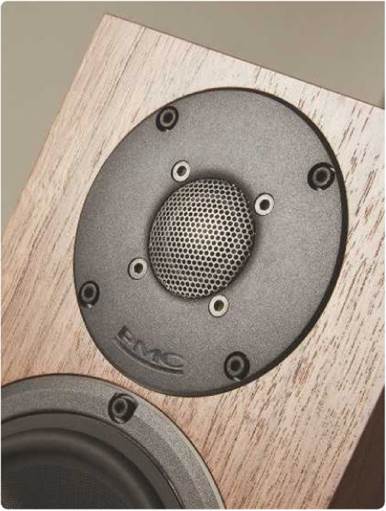PMC Twenty5.23i Review: Roaring twenties
The Twenty5 series from PMC has been a major success in recent years, both in home and (semi)professional settings. 7Review tests the successor of the series’ bestseller, the small floor-standing Twenty5.23 with the “i” for “improved.”
Tom Frantzen

This PMC could be THE dream speaker for musicality and coherence under 5,000 euros!.
Specs
PRODUCT PMC twenty5.23i
ORIGIN UK
TYPE 2-way floorstanding loudspeaker
WEIGHT 15kg
DIMENSIONS (WxHxD) 162 x 907 x 330mm
FEATURES
• 19 mm soft dome tweeter with 34mm surround
• 140mm mid/bass driver
• Quoted sensitivity: 86.5dB/1W/1m (8ohm)
DISTRIBUTOR PMC Ltd.
TELEPHONE 01767 686300
WEBSITE pmc-speakers.com
7Review has been quite taken with the Twenty5.22 and Twenty5.23 in recent years, thanks to their musical joy and fascinating agility. Naturally, PMC retained the proven core concepts such as the “Advanced Transmission Line” (ATL) and the sound path tuned to a 9.6-meter wavelength (around 35 Hz) using the quarter-wavelength formula, along with the unique “Laminair” slats at the end.
The transmission line technology results in a complex cabinet but provides significantly more bass power for the same size and reduces the necessary cone movement for bass pressure, making it easier for the bass driver.
New Tweeter
The tweeter is new, although it looks almost identical to the old one at first glance. The 19-millimeter fabric dome comes directly from the “fact” series and was developed in close cooperation with the Norwegian specialist SEAS. The goal was an exceptionally low crossover frequency of 1.7 kHz for the small dome diameter, enabled by a steeper filter and ferrofluid cooling in the voice coil’s air gap. The diaphragm is made of coated SONOMEX fabric, and the tweeters are matched or selected. The central 19mm dome is surrounded by an acoustically significant 34mm outer area, enhancing dynamics, power handling, linearity, and wide, three-dimensional dispersion. The perforated acoustic lens and the resonance-free, extremely rigid fiberglass-reinforced plastic front plate also contribute.
The second major change from the previous bestseller series is the crossover, designed to optimize the work distribution of the drivers without disrupting their intended, seamless integration. The black fiberglass boards are particularly robust, resilient, and resonance-free, similar to those used by the new distributor AVM for a long time, though independently developed.
The tracks are generously dimensioned and computer-optimized for ideal component placement. New 24dB filters ensure a stricter separation of the driver working areas for even higher power handling and reliability.
The resulting sound beam from the two-way system is now even more coherent, and the transition and timing are smoother, which also affects the off-axis tonality. It is now more similar to the on-axis tonality, practically identical, and thus more natural.

Introducing PMC’s new 19mm soft dome tweeter
The goal was greater transparency and a bit more power in the upper midrange, benefiting vocal reproduction.
“Activatable” Connection Panel? The particularly large connection panel made of brushed, non-magnetic stainless steel is noteworthy, housing the solid, high-quality single-wire terminals. This connection plate could potentially allow for future smart, network-capable “activation,” but this is purely speculative.
We found the stand to be particularly sophisticated, consisting of two decoupled but firmly screwed carriers or outriggers with height-adjustable spikes to increase stability. The construction with elastic compound layers, derived from the development of the top model “Fenestria,” significantly reduces vibrations from the cabinet to the floor and vice versa, as shown by measurements. The spectrum and resonance peaks of vibrations around 500 Hz were significantly improved, with the resonance time halved and the transmitted vibration level to and from the floor reduced by an average of 15 dB.
During break-in, it was noticeable that the tweeter integrates slightly better and subordinates itself to the overall context. The predecessor was quite lively, slightly brightening, making the 22 sound slimmer than it was, but also giving it a special agility.
And behold, the “New” surpasses its predecessor more clearly than expected. The performance is more natural, confident, and coherent in the bass, but also more natural, integrated, and consistent overall. More detail resolution and structure are perceivable across the entire range. The overall performance is more organic, with a much larger image than expected from a relatively compact floor-standing speaker, extending both in height and width beyond the base, and even competing dynamically with a Canton Vento 100. The PMC’s virtuosic agility in the mid-high range is particularly impressive. Voices are even better than with the “23,” the treble is finer, more sparkling, and perhaps a bit less coarse.
The playful PMC outperforms even significantly more expensive competitors.
Whether for the audiophile with a fine, small amplifier as a purist set or with ample power, this PMC grows with the electronics and plays highly musically, superbly coherently, and without any diva-like behavior. Possibly THE dream speaker under 5,000 euros!
Lab Comment
Quite balanced frequency response, remaining fairly linear even off-axis, so don’t angle the speakers too sharply. With just under 85 dB (2.83 V), average efficiency, low distortion. Good-natured impedance with a peak at the crossover frequency. Equipment Two-way design, transmission line, vibration-damped stand with adjustable spikes, single-wire terminal, 20 (!) years warranty






